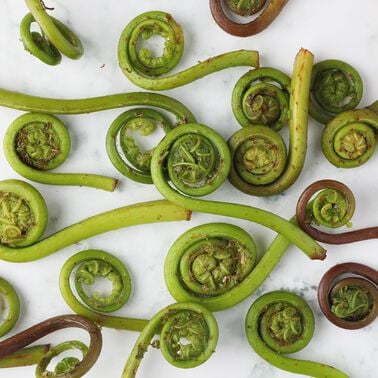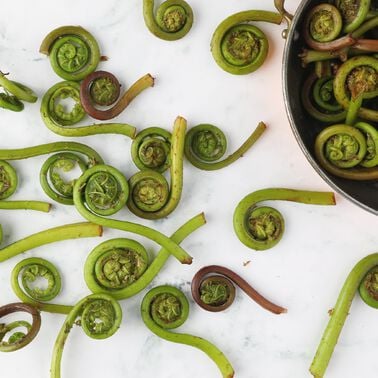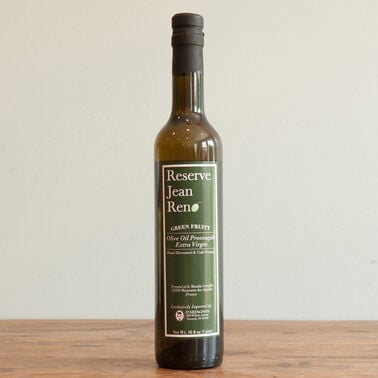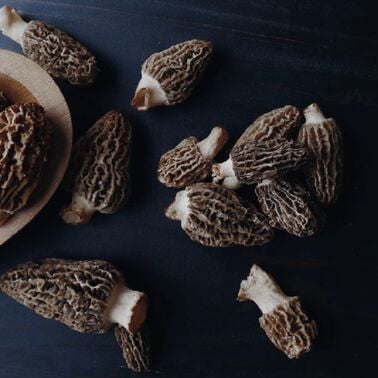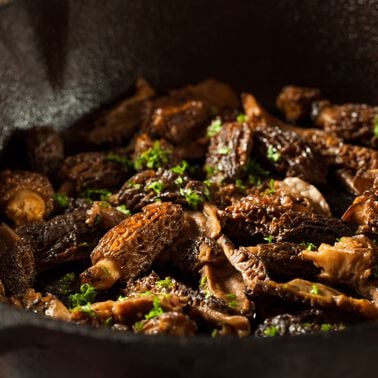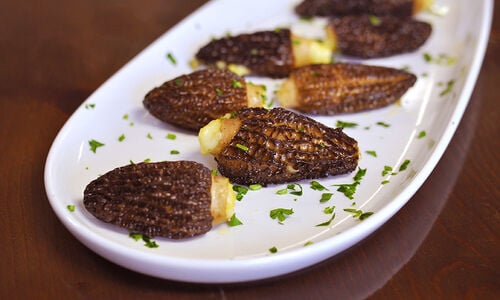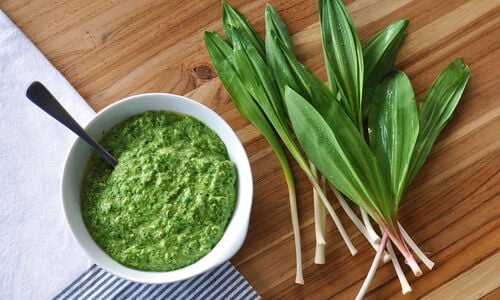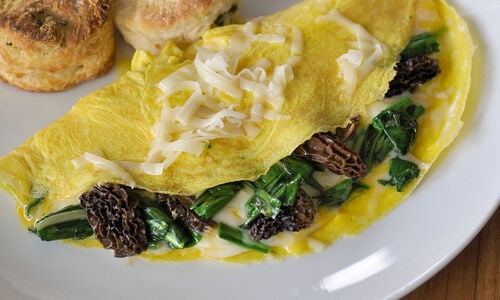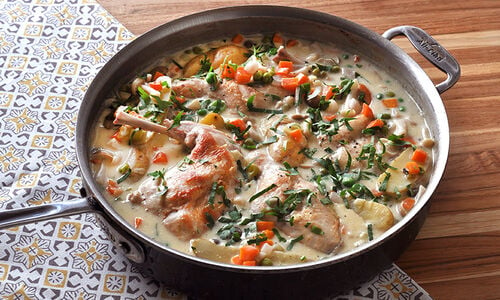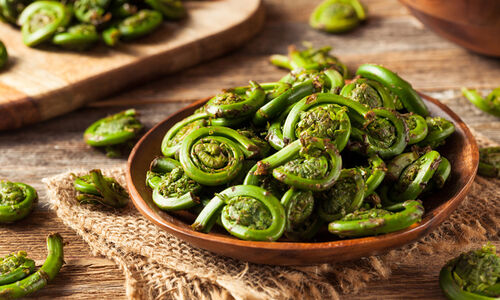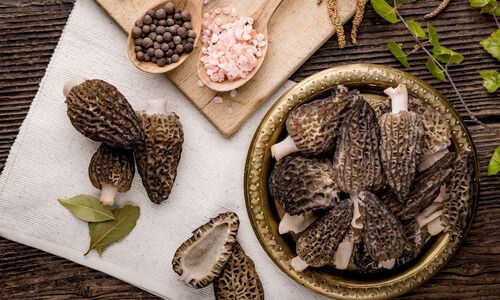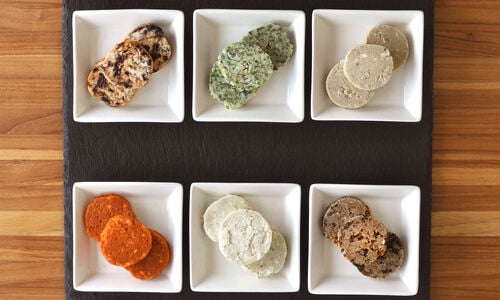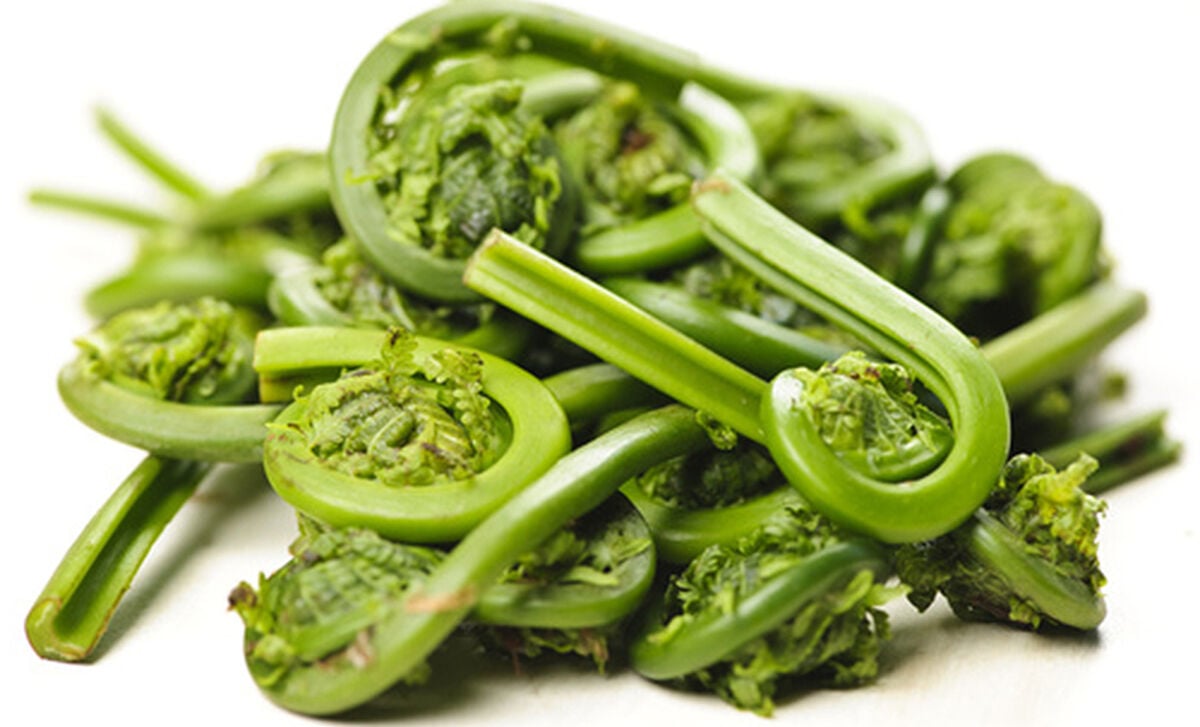
What is a Fiddlehead Fern?
Very simply, a fiddlehead is the first growth of certain ferns. As a fern grows, each frond unrolls, growing upward, but in the earliest stages, it remains curled in a spiral shape, close to the ground, about an inch to two inches high. In the Eastern United States, the ostrich fern can be found in profusion in wet forest areas. In Western states, the early curled fronds of the lady fern are often eaten, though they are bitterer than the ostrich fiddleheads.
Since they are such a seasonal item, and they are not cultivated but only foraged in the wild, fiddlehead ferns are much loved among the food cognoscenti. It doesn’t hurt their reputation that they are tasty in a tender and crunchy way, and can be cooked in a variety of dishes.
Fiddlehead Fern Season
Fiddlehead fern season is welcome after the cold months of winter, and varies by geography. One of the many pleasures of early spring is the brief moment when fiddleheads, or fiddlehead fern greens, can be found. The timing has to be perfect, as the fiddlehead (named after the scrolled end of the violin) is a young unfurled frond of a fern. Wait too long into the spring season, and the fiddlehead will have already opened into one of the feathery fronds of a mature fern, and be inedible.
Where Do Fiddleheads Grow?
Fiddlehead ferns can be found the lowland forests, in damp, shaded areas. Look for large ostrich ferns, which are about four feet high, during the rest of the growing season, and return to those spots in early spring to find the fiddleheads.
Fiddlehead Fern Identification
Even though all ferns produce fiddleheads during early stages of development, not all fiddleheads are safe to eat. While there are more than 10,000 species of ferns, the one most suitable for eating in the United States is the ostrich fern (Matteuccia struthiopteris), found practically everywhere in the northern hemisphere.
It is important to properly identify ostrich ferns, since other ferns are not edible. Look for bright green coils with thin, brown, papery scales covering them, which fall away as the frond unfurls. There is a deep U-shaped groove in the inside stem, which is distinctive to the ostrich fern. As with all foraging, do your research before eating! Check online guides and foraging books to be certain you know what you are eating.
Fiddlehead Ferns Taste
Fiddleheads taste green—like the deep, moist green of the forest. Some say they taste a bit like asparagus, broccoli, spinach, or green beans, but it’s hard to pinpoint the exact taste of such a special little plant. They are prized for their delicate flavor and crunchy texture.
Fiddlehead Ferns Nutrition
Nutritionally, fiddleheads contain omega-3 and omega-6 fatty acids and a number of other vitamins. They are high in vitamin A, which is a powerful antioxidant, and also vitamin C. Fiddleheads are a good source of minerals and electrolytes, like potassium, iron, manganese, and copper.
Preparing and Cooking Fiddlehead Ferns
Fiddleheads have brown papery skin that must be removed before eating, and they may have dirt or other detritus from the forest floor clinging to them. Place your fiddleheads in a colander and rinse or spray them with cold water. Then place fiddleheads in a bowl of cold water, and let them sit for a few minutes, and then return them to the colander to drain. This should allow the crevices to be thoroughly washed. If there is any stem extending from the coil, cut that off before cooking.
How to Cook Fiddlehead Ferns
It is very important to cook fiddlehead ferns properly. The Centers for Disease Control has investigated several food-borne illness cases with fiddleheads and recommends eating them fully cooked as a result. It is best to blanch or boil fiddleheads before sautéing, or cooking in other preparations. Read more about cooking fiddlehead ferns here.
